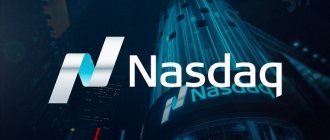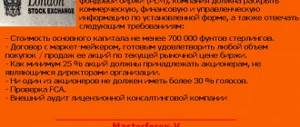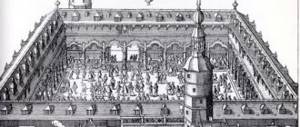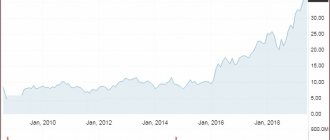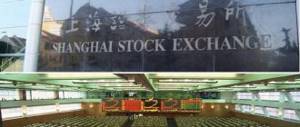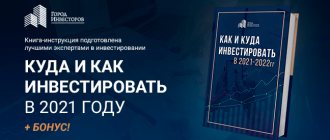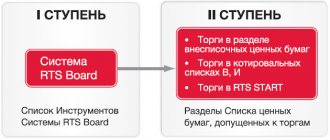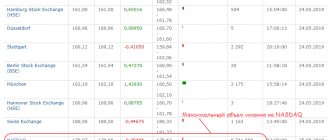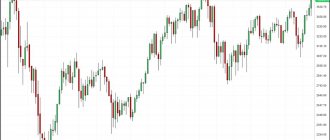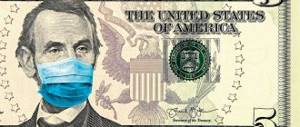Japan's largest stock exchange, the Tokyo Stock Exchange, was founded in 1878 in Tokyo. Today, it trades nearly 3,500 companies with a combined market capitalization of more than $4 trillion.
An important event in the Japanese economy was the post-war Asian miracle. Technologies developed, progressive innovations took place. Thanks to this, the value of shares of Japanese companies grew steadily. The Tokyo Stock Exchange at that time did not even have an electronic display; prices were written in chalk on a regular board. Since 1968, the Japanese government began to work on regulating the exchange and exchange operations: some restrictions were introduced on the activities of brokers. In 1990, the Tokyo Stock Exchange accounted for 60% of the world stock market and was the first in the world in terms of capitalization. Today, it is overtaken by American exchanges, despite this, the TSE remains first in Asia and third in the world in terms of capitalization of listed companies. In 2012, the Tokyo Stock Exchange absorbed the Osaka Stock Exchange and became the Japan Exchange Group.
Economic situation in Japan
Japan is the second country in the world in terms of economic development, third in terms of nominal GDP and fourth in terms of PPP (public-private partnership). In 2014, Japan's economy ranked 28th in the world in terms of GDP per capita. The country is one of the most innovative nations in the world, with the largest electronics industry and patent documentation. Japan is also the world's largest creditor with a leading indicator of government debt. The country is home to 13.7% of private financial assets, valued at US$13.5 trillion and comprising 54 Fortune Global 500 companies. However, the Japanese economy faces stiff competition from China and South Korea.
You may be interested in: Maximum tax deduction amount. Types of tax deductions and how to get them
There are a number of problems in the Japanese economy that are no secret. Among the biggest: an aging workforce, high levels of government debt and persistent deflation. But modest Japanese share prices already cover this, meaning there is plenty of upside potential.
Exchange traded oil grades
The most popular type of oil, the name of which is on everyone’s lips, is Brent oil. The variety received its name thanks to the shelf deposit of the same name located near Great Britain, one and a half hundred kilometers northeast of the Shetland Islands (coordinates 60°54′N 1°48′E). The Brent field was discovered in 1971 and was developed by Shell.
By the way, the field itself was named after the brent goose (a waterfowl of the anatidae family), the Latin name of which is Brent Goose.
Currently, this field has almost completely exhausted itself and is planned to be closed soon. However, back in the 80s of the last century, the oil produced there served as the reference grade of Brent Crude. Later, the oil from this field became just one component of the Brent Blend.
Statistics show that the prices of approximately 70% of all currently existing types of oil are in one way or another tied to the cost of a barrel of Brent oil.
The next most popular type of oil is WTI (West Texas Intermediate), also called Light Sweet Crude Oil. Previously, before the discovery of the Brent field, it was the only marker grade of oil in the world. Mined in Texas since the early 20th century and traded on the NYMEX since 1983. Despite the fact that the volume of WTI oil production is less than 1% of the total volume of world oil production, the price of this grade is decisive for many other grades.
Dubai Crude oil is produced in the emirate of Dubai and is the standard oil for the entire Persian Gulf region. Based on the value of this grade, the price for a third of the oil produced worldwide is set.
The three types of oil listed above: Brent, WTI, Dubai Crude are the so-called. marker varieties. This means that their prices are decisive for all other types of oil produced in the world.
In addition to these three main types, there are about 270 other types of oil in the world. All of them are classified according to many characteristics, the main ones being density and sulfur content.
By density:
- API>34 – “light”;
- 33>API>31 – “average”;
- API<30 – “heavy”;
Typically, the higher the API, the more valuable the grade of oil. This is due to the fact that more gasoline fractions can be obtained from light oil, while more fuel oil is obtained from heavy grades.
By sulfur content:
- Sulfur content below 0.5% per kilogram of weight – “sweet” oil;
- Sulfur content above 1% per kilogram of weight is “sour” oil.
Russian oil grades
There are six main types of oil in our country:
- Urals;
- Siberian Light;
- ESPO;
- Sokol;
- Vityaz;
- ARCO.
Urals grade is obtained by mixing “heavy” high-sulfur oil produced in the Urals and the Volga region (Bashkiria, Tatarstan, Samara region) with the “lighter” Siberian Light grade (production location is Western Siberia). According to its characteristics, it belongs to high-sulfur (sulfur content about 1.3%) “sour” varieties with medium density (API about 32).
Siberian Light grade a light low-sulfur oil produced in Western Siberia (KhMAO, YAMAO) and has characteristics similar to such marker grades as Brent and WTI (API in the region of 35-36 and sulfur content of about 0.57%).
The ESPO grade is another grade of light Siberian oil (API 34.8) with low sulfur content (0.62%). Its price is tied to the marker variety Dubai Crud (although the ESPO variety is objectively superior to Dubai Crud in terms of quality). It has every chance of becoming another standard (marker) grade of oil after its production and supply volumes increase (as a result of the completion of ESPO).
Sokol and Vityaz varieties are mined on Sakhalin and are distinguished by their lightness (36 and 41 degrees API) and low sulfur content (0.23% and 0.18%). The cost of varieties is tied to Dubai Crud, in relation to it they are traded at a premium (due to their higher quality).
ARCO variety has been mined at the Prirazlomnoye field in the Pechora Sea since 2014. This is the heaviest (API 24) and high-sulfur (sulfur - 2.3%) Russian grade of oil. Production is carried out from a stationary platform installed on the Arctic shelf (the first project of this kind in the Arctic in the world).
Historical background
The history of the Tokyo Stock Exchange dates back to the 1870s, when Japan's securities system was created and public discussion of bonds began. The stock exchange was founded on May 15, 1878, and trading on the exchange began in June of the same year.
Between August 10, 1945 and April 1, 1949, official trading on the exchange was suspended due to the war. After several post-war reorganizations, the TSE became the largest of five exchanges in Japan, including the Sapporo Securities Exchange, the Osaka Securities Exchange, the Nagoya Stock Exchange and the Fukuoka Stock Exchange.
On July 1, 1969, the TSE introduced TOPIX (Tokyo Stock Price Index), which is a composite index of all domestic stocks listed on the exchange. TOPIX is considered the best indicator of the financial health of the Japanese stock market.
The owner of the Tokyo Stock Exchange is Japan Exchange Group, Inc., a holding organization with subsidiaries that includes Osaka Securities Exchange Co., Ltd. (OSE), as well as the Tokyo Stock Exchange and the Japan Securities Bank.
Nikkei and TOPIX stock indices
Stock indices help monitor the state of the Tokyo Stock Exchange - these are indicators of the general dynamics of the value of securities traded on the exchange. The most famous of them are the NIkkei 225 index, which includes 225 largest companies diversified by industry, and the TOPIX index, consisting of more than 2 thousand companies and taking into account changes in dividends paid.
Japan is a large and developed country, so the state of its economy can affect the economy of the whole world. All this makes the Tokyo Stock Exchange the largest and most popular exchange in the world. Transnational giants trading on the TSE also attract foreign investment. For private investors, there are convenient tools that allow you to make money on the dynamics of the price of stock exchange securities.
You can get even more concepts, terms, and most importantly, practical recommendations and knowledge in our “Investment Foundation” program.
Tokyo Stock Price Index
The Tokyo Stock Exchange stock indices, known as TOPIX and Nikkei 225, are an important stock index for the exchange in Japan, tracking all domestic companies of the first section of the exchange. There were 1,669 companies registered in the first section of the TSE, and the market value of the index amounted to 197.4 trillion Japanese yen.
You may be interested in:IFRS 10: concept, definition, international standards, unified concept, rules and conditions for submitting financial statements
This metric has moved from a system where a company's weighting is based on the total number of shares outstanding to be weighted based on the number of shares available for trading (called free float). This transition occurred in three stages, starting in October 2005, and was completed in June 2006. Although this change is technical, it has had a significant impact on the weighting of companies in the index, as many companies in Japan have significant holdings of shares of their business partners in complex business alliances, and such shares are no longer taken into account when calculating the weight of companies in the index.
Japan Exchange group
The Japan Monetary Exchange Group (JPX) is a private holding corporation that facilitates trading in financial securities in Japan. Authorized by the Financial Instruments and Exchange Act 2008, JPX provides an exchange infrastructure that enables trading of futures, debt instruments and derivatives. Based in Tokyo, it is among the world's elite exchanges and has a market capitalization of $4.48 trillion. This makes JPX the leading corporation in Asia and the third largest corporation in the world.
JPX has three main subsidiaries, each of which specializes in a specific market function: the Osaka Exchange, the Tokyo Stock Exchange and the Japan Exchange Rate Authority.
The TSE functions as Japan's central securities market and provides the lion's share of the total liquidity of the JPX.
Japan Exchange Group (JPX)
Good day everyone! Continuing our study of the leaders of the global stock market, we move to the land of the rising sun, where the third largest trading floor is located. So, today we will plunge headlong into the Asian stock market and learn everything about the Japan Exchange Group, what kind of group it is, what exchanges are part of it, what instruments are traded on them, hours and features of work, listing, indices and much more.
Introduction
So on the agenda is the Japan Exchange Group (JPX) , which appeared on January 1, 2013 through the acquisition of the Osaka Securities Exchange by the Tokyo Stock Exchange Group and occupies third place in the list of market leaders, behind the two NYSE sites I previously described (https: //osa.net/posts/nyse.html) and NASDAQ (https://osa.net/posts/nasdaq.html).
Despite the fact that Japan's economic development has slowed significantly over the past two decades after incredibly rapid growth, when stock prices were no longer in line with the real value of the assets they represent, Japan Exchange Group is actively working to strengthen and maintain its position in the market. Capitalization has crossed the six trillion dollar mark.
Next we will take a detailed look at both exchanges that are part of the association, and of course we will start with the leader of the Asian market - the Tokyo Stock Exchange (TSE / TYO).
Tokyo Stock Exchange (TSE)
The Tokyo Stock Exchange (TSE), part of the Japan Exchange Group, or rather it turns out that it is the initiator and main culprit in the emergence of the association, so we can rightfully consider the history of this exchange to be the prehistory of the Japan Exchange Group.
80 percent of the turnover of Japanese shares takes place on the Tokyo Stock Exchange, which is the leader among Japanese trading platforms, the remaining twenty are distributed between the exchanges of the cities: Osaka, Sapporo, Fukuoka, Niigata.
The site is open on weekdays in two main sessions; futures are traded during the evening and night sessions. Weekends, Saturday and Sunday, as well as holidays such as: New Year, Constitution Day, Sea Day, Green Day, Thanksgiving and Labor Day, Coming of Age Day and others that are announced in advance. You can always check the schedule on the official website using the link: opening hours
As for the location, the exchange building is located in Tokyo, it is divided into several departments: a media center (responsible for displaying information on screens), a presentation room (for holding meetings and meetings), a trading room (the room in which trading took place before moving to online format), information terrace (where you can learn about completed transactions), historical museum (where you can get acquainted with the history of the exchange). Official website: https://www.jpx.co.jp
The history of the Tokyo Stock Exchange begins back in 1878, when, with the opening of the West, the government made a choice between a planned or market economic model of development. On June 1, lawyer Shibusawa Eiichi, together with his colleague (Prime Minister) Okuma Shigenobu, opened the doors of the stock exchange.
In the mid-1890s, the exchange changed its structure, became a joint stock company and moved to a new building.
A little less than half a century later, the Tokyo Stock Exchange (in 1943) became a monopolist in Japan, having absorbed 10 securities trading platforms.
In August 1945, after the bombing of Hiroshima, the stock exchange was closed for four whole years.
Until 1974, in the absence of electronic scoreboards, quotes were written with chalk on a blackboard; separate specialists were hired for this.
Between 1983 and 1990 there was incredible growth that brought the Tokyo Stock Exchange to first place in the world, although the Americans soon changed the situation.
Like all modern trading platforms, the Tokyo one went through the stage of electronization of the trading system; on April 30, 1999, the exchange floors were closed, and all trading went online.
In two thousand and nine, the Tokyo and London exchanges entered into an agreement to create a division of the Tokyo AIM Stock Exchange to work with foreign companies, and additional sectors were created on the exchange.
The decisive merger with the Osaka Exchange took place in 2012, which resulted in the creation of the Japan Exchange Group, which united two exchanges (Osaka Securities Exchange, Tokyo Stock Exchange Group) and a clearing company (Japan Exchange Regulation), officially opened on January 1, 2013.
In general, as always, when using electronic systems there were some incidents, although not small ones at all. Thus, due to a mistake by the broker Mizuho Securities, who entered into the system data on J-Com shares put up for IPO at a price of 610,000 yen per share, he indicated the cost of one yen for 610,000 shares. While the error was discovered, a certain number of happy traders managed to buy you an asset for free. The result was a loss of $347 million, which was divided equally between the exchange and Mizuho Securities. The management of the exchange admitted their guilt and collectively left their posts; nothing is known about the fate of the main culprit.
Before the incident with J-Com shares in the same 2005, there was an unscheduled day off due to a failure in the system (damage of $350 million). In 2006, when the number of transactions exceeded four and a half thousand, the system failed again and stopped trading for twenty minutes. After each failure, the system is improved, but it is still far from flawless operation, so failures occur periodically. Well, now let's talk about the participants.
The Tokyo Stock Exchange has three categories of trading participants with different statuses and powers:
— regular members – brokerage companies that carry out transactions on behalf of themselves and their clients;
— saytori – brokers who accept and execute orders from regular members;
— special members - companies that interact between regional exchanges and TSE.
As for the exchange participants, there are no differences here, the same market makers (stock brokers), investors, holders, brokers.
Bidding is conducted using the open double auction method and takes place in three trading systems:
— online system — Arrowhead
— offline system — Trading NeTwork System
— derivative system — J-Gate.
All companies whose shares are traded on the Tokyo Stock Exchange are divided by capitalization into three large groups (sections): high-capitalization, mid-capitalization and fast-growing companies / startups, with excellent prospects (Mothers / Market of the High-Growth and Emerging Stocks ).
The first section is the largest, more than half of the companies are included in this section, the third includes the smallest number of issuers, and participants in this group are also offered a number of benefits when listing.
Foreign companies were only allowed to trade in the mid-nineties, and at the moment there are very few of them; after all, the Tokyo Stock Exchange and Japanese exchanges in general remain quite closed.
I will list you a few companies that trade their shares on the TSE: Toyota, Honda, Mazda, Nikon, Olympus, Konica, Bank of Yokohama, Fukuoka Financial Group.
Listing takes about three months, and in addition to the usual standard criteria, it has some that make it much more difficult, such as: does the company operate fairly (does it offend anyone?) or does the company conduct its business honestly?
Now about the indices, the Tokyo Stock Exchange has two main ones: Nikkei 225 and TOPIX.
Nikkei 225 - was first published in September 1950 under the name "TSE Adjusted Stock Price Average", twenty years later the authority to calculate it was transferred to the Nihon Keizai Shimbun newspaper, from whose abbreviation the abbreviation of the name of the index actually appeared. Calculated as a weighted average of the prices of 225 shares of the most actively traded companies. It is one of the main economic indicators of the stock exchange and Japan.
TOPIX - first published on July 1, 1969, calculated every fifteen seconds as the weighted average of the stock prices of all companies in the first section. The list of participants is fixed twice a year: in January participants are added and removed from the index, in July they are only added.
There are many derivative indices with different numbers of companies included in the calculation, industries, and so on.
Today, Tokyo Stock Exchange is the most popular stock exchange in Asia, where transactions with companies that are leaders in various areas of a highly developed country take place. This is a place where, in our modernity, tradition is more important than profit, all participants are treated with respect, so the site is a success, attracts foreign capital and contributes to the enrichment and development of the country.
The Okaka exchange is far from being as giant as the Tokyo one, but it is part of the Japan Exchange Group, so we simply have to spend our precious time and talk about it.
Osaka Securities Exchange (OSE)
The Osaka Securities Exchange is the second largest stock exchange in Japan, specializing in the sale of derivative financial instruments (derivatives, futures, options, price publications and quotes).
Options indices and index futures traded on the Osaka Securities Exchange (Nikkei 225 Futures, Nikkei 225 mini, Nikkei 225 Options and TOPIX Futures) are based on foreign and domestic indices.
OSE appeared several centuries ago during the era of grain exchange, when Osaka was the economic center of Japan.
The year 1730 is considered to be the year when futures transactions appeared in Japan.
In 1990-1991, Osaka Securities Exchange was the leader in the global futures market.
The development of the exchange before 1943 is unknown, and in that year it, like other sites, was absorbed by the Tokyo exchange for the first time.
In 1945, it also stopped working while the country was being restored after the American bombing.
In 2001 it was merged with the Kyoto Exchange.
On April 1, 2010, Osaka Securities Exchange entered into a deal to purchase JASDAQ Securities Exchange, which became one of the exchange's markets.
The high-tech trading platform JASDAQ was created (in the image and likeness of the famous American NASDAQ) on June 1, 1976.
JASDAQ was originally an over-the-counter securities market before its takeover by the Osaka Exchange.
In July 2013, JASDAQ transferred from the control of the Osaka Securities Exchange to the control of the Tokyo exchange.
From the very beginning, trading was carried out using high technology; screens were used to display information when trading.
Highly specialized indices are calculated on JASDAQ: JASDAQ (JSD) and JASDAQ 20 (JSD20).
So we return to the Osaka Stock Exchange.
In 2011, it was decided to merge the exchanges (Tokyo and Osaka), and the decision was implemented in 2012. By the way, the Tokyo Stock Exchange transaction cost more than one and a half billion dollars. And then the actual history of the merger of the Japan Exchange Group begins, which is what we are moving on to.
Japan Exchange Group (JPX)
As mentioned earlier, Japan Exchange Group (JPX) was founded in 2013 by merging the Tokyo and Osaka exchanges.
JPX trades securities, futures, derivatives, debt instruments, the total number of issuers is almost four thousand, the capitalization is more than six trillion dollars, it is the leader of the Asian and world (third place) markets.
Japan Exchange Group has three main subsidiaries specializing in different market functions: Osaka Securities Exchange, Tokyo Stock Exchange Group and Clearing Company (Japan Exchange Regulation).
The TSE provides a large share of the JPX's liquidity and is the country's central (main) securities market.
Japan Exchange Group performs the following functions:
— manages exchange markets;
— provides participants with reliable trading platforms;
— provides clearing and settlement services;
— supervises the operation of the market.
After the formation of the Japan Exchange Group, the main (main) indices of the country began to be calculated by the united index families Nikkei and TOPIX.
JPX calculates a fairly large number of indices, these are the main indices, indexes by sections and sectors, let's look at a few of them.
JPX-Nikkei400 - first published in January 2014, the main JPX index is calculated from the four hundred largest companies from the main market of the Tokyo exchange (392 companies), the first and second sections of the Mothers (one company from each section) and the JASDAQ market (6 companies ), recalculated every second.
JPX-Nikkei Mid & Small Cap Index is an additional index to the JPX-Nikkei400; the next 200 companies from the list by capitalization, the same markets and sectors as the main index are taken for calculation.
Since 1970, the Nikkei 225 index has been calculated, which has become one of the most important indices in Japan, including 225 leaders from the first section of the Japan Exchange Group.
TOPIX - the index has been calculated since 1968 and includes companies in the first section of the Tokyo Stock Exchange Group, of which there are almost two thousand.
Tokyo Stock Exchange Second Section Stock Price Index - has also existed since 1968, companies from the second section are taken into account.
Tokyo Stock Exchange Mothers Index - appeared in 2003, calculated based on shares of 212 companies from the Mothers section.
JASDAQ Index - calculated since 1991, includes 779 companies (735 from the Standard subsection and 44 from the Growth subsection).
How to gain access to the Japan Exchange Group sites and start working on the Japanese stock market? Everything is exactly the same as with the American market. Search and register with a broker, Russian or foreign, as your heart desires and your wallet allows, or search and select ETFs.
Japan Exchange Group's main sources of income are profits from trading, clearing, listing and information services. In fulfilling its functions, JPX provides a reliable and secure market infrastructure, receiving compensation for this from companies using the market (issuers, information providers and others).
Japan Exchange Group's main listing includes nearly four thousand companies with a capitalization of more than six trillion dollars.
According to 2021 data, the proportion between subsidiaries was as follows:
— Tokyo Stock Exchange Group: 1936 listed companies, capitalization $4 trillion;
- Osaka Securities Exchange: listing of 541 companies, capitalization of $498 billion;
— JASDAQ: 740 companies are traded, capitalization $62 billion.
Conclusion
According to one version, the reason for the success of the Japanese corporation lies in its corporate philosophy, in the set of rules that guide exchange participants when performing their work. For example, every employee must contribute to the development of the company and benefit society as a whole, not to mention unquestioning compliance with all established rules.
In Japan, trading in shares began in the nineteenth century, the market was actively developing, increasing its power, but despite all this, it reached the global level only recently. Although there is an opinion that the Japanese market has not yet matured.
In conclusion, I would like to draw your attention to the fact that: Japan Exchange Group has been firmly on its feet, so to speak, since 2008, despite crises and incidents, the Nikkei 225 index has been growing steadily, capitalization is increasing and I don’t think that in the near future it will decrease its position in the world market.
If you are interested in entering the Asian market, then I advise you to start your journey with the Japan Exchange Group platforms. They created everything, work hard, and I think they are able to satisfy all the requirements (I mean the wishes in terms of available tools, etc.) of even the most fastidious trader.
Just don’t forget that before you invest money in a new market, you need to carefully study the market you are entering, its instruments, trading features, here our article will help.
I also advise you to take your choice of broker seriously, weighing all the pros and cons.
In general, study, analyze, plan, connect, earn money!
Members of the Tokyo Stock Exchange
Exchange membership is a limited number of positions that allow the holder to make trades on his own behalf or on behalf of a client. Main participants of the stock exchange:
- companies that conduct transactions at their own expense or for the benefit of a client are regular members;
- intermediary companies between regular members - saytori;
- companies that connect stock markets and carry out special operations - special participants;
- non-bank securities companies (in associate with banks).
You may be interested in: Rating of insurance companies for compulsory motor liability insurance: main criteria for assessing payments
Saitori are members of the TSE, acting as intermediaries between brokers.
Organization and principles of operation of the Tokyo Stock Exchange
In terms of market capitalization, the TSE is only surpassed by the New York Stock Exchange. The Tokyo Stock Exchange accounts for over eighty percent of the country's exchange turnover; the main participants are the owners of securities of the Tokyo Stock Exchange. The listing requirements are that the project must be approved by the relevant exchange authorities and cover the following information: the securities offered and their details, assets and liabilities of the company, group management, investor rights, profit and loss, and financial forecasts. Once the project is approved, the company gains access to the exchange as a member.
Only twenty percent is owned by individual owners on the exchange, the remaining eighty percent is distributed among financial and insurance companies. Shareholders in Tokyo are not counting on dividends, but on increasing the price of shares and receiving income from selling at the highest price.
Up to 80 percent of all shares held in Japan are traded and traded on the Tokyo Stock Exchange. The 1,517 registered firms account for more than 25 percent of all goods and services.
London and Iran Oil Exchanges
London-based ICE Futures Europe was formed in 2005 on the basis of IPE (International Petroleum Exchange). In addition to oil, options and futures contracts for such energy resources as:
- Fuel oil;
- Natural gas;
- Electricity;
- Coal;
- Carbon credits.
ICE Futures Europe's flagship commodity is Brent crude oil.
The Iranian Oil Exchange was opened on February 17, 2008 in the Persian Gulf (Kish Island). It presents oil, gas, and a whole range of petrochemical products. The main goals of creating the exchange were:
- Providing access to the oil market to Iranian investors;
- Regulation of oil price volatility and transparent pricing;
- Taking a leading position in oil trading in the region.
Facts and figures
This is interesting:
- The latest report (August 2021) of the TSE shows that there are approximately 3,636 companies listed on the exchange.
- The same 3,636 listed companies have a total market capitalization of US$6.05 trillion.
- About 800 million shares are exchanged on the TSE every year.
- In August 2021, an average of 3.3 billion shares were exchanged, valued at $21.5 billion.
- The most important index traded on the TSE is TOPIX, which includes TOPIX, TOPIX 1000, TOPIX Small, TOPIX 500, TOPIX Mid, TOPIX Core 30 and TOPIX Large 70.
- In addition to TOPIX, Nikkei 225 is recognized as one of the world's major stock indices today.
Tokyo Exchange Companies
Tokyo Exchange companies are divided into three groups: largest capitalization companies, mid-market companies and high-growth companies and industries. As of February 2021, the first group included 2,128 companies, the second included 493, and 276 belonged to the growing group. The largest by capitalization on the TSE are: Toyota Motor Corporation (¥222.6), NTT DOCOMO,INC. (¥105.931), Mitsubishi UFJ Financial Group, Inc. (¥96.883), SoftBank Group Corp. (¥87.5) and Keynence Corporation (¥80.3). Among the companies traded on the stock exchange are also world-famous automobile concerns Mazda, Honda, high-tech device manufacturers Casio, Olympus, Sony, Nikon and others.
Incidents
The work of the exchange ceased on August 10, 1945 due to the American atomic bombings, and after the premises of the exchange they were occupied by their troops. The TFB became the headquarters for the American military until January 1948, which also became the new government. Gradually, power returned to the Japanese government.
On November 1, 2005, trading on the exchange stopped for almost the entire day due to a failure of the trading system.
In January 2006, the number of transactions concluded on the TSE exceeded 4,500,000, and trading stopped for 20 minutes. The exchange was forced to take measures to modernize its computer systems to prevent system failures in the future.
TFB opening hours
Standard trading hours for most exchange-traded products listed on the TSE are from 09:00 to 11:00 and from 12:30 to 15:00. Product-specific trading hours include:
- Japanese Government Bonds (JGBs) 13:00 to 13:30 (09:30 to 10:00).
- Foreign bonds denominated in foreign currencies, from 13:30 to 14:00 (from 10:00 to 10:30).
- Direct bonds from 10:00 to 11:00.
- Derivatives from 09:00 to 11:00 and from 12:30 to 15:10 (09:00 to 11:10).
- JGB derivatives from 09:00 to 11:00, from 12:30 to 15:00 and from 15:30 to 18:00.
Note: The opening hours mentioned above are local time in Tokyo, Japan. The standard time zone for Tokyo is UTC/GMT +9 hours.
Important stock markets and exchanges
Stock markets are financial markets that connect individual and institutional investors with businesses in need of capital. These markets play an important role in the country's economy. Stock exchanges work with national and international regulators to ensure transparency and protect participants from unfair trading practices.
| North America | Asia | Europe | Other markets |
| The leading positions in terms of the value of traded shares are occupied by the New York Stock Exchange and Nasdaq. The New York Exchange, as the world's largest stock market, is the preferred listing location for thousands of stocks and securities of US and foreign companies. The Dow Jones Industrial Average, S&P 500 and Nasdaq-100 are closely linked to market indices that track baskets of stocks traded in these two major markets. These indices often serve as a proxy for the US economy, which has a significant impact on other major world economies. | The next three largest stock markets by value of shares traded were the Tokyo Exchange, followed by the two Chinese stock markets of Shanghai and Shenzhen. These markets reflect the growing importance of Asia in the new millennium. The Tokyo Stock Market is uniquely positioned as the market that begins trading when evening falls in New York | London and Frankfurt are home to two of Europe's largest stock exchanges. London is seen as the financial capital of Europe, while Frankfurt is a major financial center in Germany and home of the European Central Bank. The United Kingdom is one of the largest economies in Europe, and London serves as a financial intermediary between Europe and North America. Paris, Milan and Madrid are home to other important European stock exchanges | You may be interested in: Housing cooperative "Best Way": customer reviews, reliability of the developer, review of branches The stock exchanges of Sao Paulo and Johannesburg, which are the largest in their regions, play an important role in the efficient allocation of capital. Information technology has also facilitated the creation of electronic communications networks that allow mainly institutional investors to trade 24 hours a day through secure servers |
Tokyo Stock Exchange Index (Nikkei Stock Average, Nikkei)
The Tokyo Stock Exchange Index (Nikkei Stock Average, Nikkei) is one of the key indicators that fully reflects the state of affairs in the Japanese stock market and in the country's economy as a whole. The index is based on the 225 largest companies whose shares are listed in the first section of the Tokyo Stock Exchange.
The formula for calculating the Nikkei Stock Average index is the result of the work of the famous American company Dow Jones &Co. Since its inception, the index has been calculated by the Tokyo Stock Exchange. Subsequently (since 1985), the financial newspaper Nihon Keizai Shimbun Inc. took on the task of calculation.
The Tokyo Stock Exchange Index (Nikkei Stock Average) has an abbreviated name - Nikkei 225 (this is what is used most often). At its core, it is an analogue of the Dow Jones index in the United States. The unit of account is Nikkei 225 – the national currency of Japan (Japanese yen).
The Nikkei Stock Average is a price index based on the nominal share price of 50 Japanese yen. Each change in the price of a stock in the index list directly affects the overall indicator. The companies included in the Nikkei 225 index are reviewed annually - in September. The decision to remove or include companies on the list will be published as early as next month.
Many exchanges around the world have licenses to work with the Nikkei 225 index:
Nikkei Stock Average (Nikkei 225) Key Indicators
First calculation - September 7, 1950. The old name is TSE Adjusted Stock Price Average. The base date is May 16, 1949. The basis is 225 shares of the largest companies on the Tokyo Stock Exchange.
Features of the calculation - the arithmetic average of the market capitalization of all 225 components. The current figure as of 05/08/2015 is 19,291.99
Official website - indexes.nikkei.co.jp/en/nkave.
History of the Nikkei Stock Average (Nikkei 225)
The Nikkei Stock Average was launched on September 7, 1950. Before this, it was also calculated, but under a different name - “Nikkei Dow Jones Index. Moreover, the first calculation of the Nikkei-Dow Jones index was made in 1949 (May 16). In all subsequent years, it was called the TSE Adjusted Stock Price Average, and the calculations were carried out directly by the Tokyo Stock Exchange.
Since 1985, the calculation functions have been transferred to Nihon Keizai Shimbun Inc, a financial newspaper in Japan, which still performs its functions today. From that moment on, the index received its new name Nikkei Stock Average in honor of the settlement organization.
The main advantage of the index is the effective smoothing out of unstable events in the country’s economy, which are unstable and manifest themselves from time to time (for example, a decrease in market prices after a fall in the value of shares of the largest companies).
The index's greatest peak occurred in late 1989 and early 1990, when the Nikkei Stock Average reached 38,915 points. The Tokyo Stock Exchange index dropped to the 1984 level twice – in 2003 and 2009.
Members of the Nikkei Stock Average (Nikkei 225) Index "family"
The Nikkei Stock Average “family” includes a whole group of indices.
Let's look at the features of some of them:
1. The Nikkei 500 Stock Average index is an index that, in terms of its features and calculation principles, completely replicates the Nikkei 225. The only difference is that for its calculation, the indicators of 500 shares of the best companies on the Tokyo Stock Exchange are taken. The Nikkei 500 Stock Average does not include mortgage investment trusts or ETFs. The index was first calculated on January 4, 1972. The current value as of May 8, 2015 is 1,714.27 points.
2. The Nikkei Stock Index 300 is calculated based on the 300 largest companies on the Tokyo Stock Exchange in the first section, excluding ETFs and investment trusts. The Nikkei Stock Index 300 index began calculation on October 8, 1993. Base calculation – 1982, October 1st. At that time, the base index value was 100 points. The current figure as of May 8, 2015 is 319.91.
3. The Nikkei JASDAQ Stock Average index is calculated on the same principle as the Nikkei 225. The index is based on the largest companies in Japan, excluding the Bank of Japan, investment funds and ETFs. The base date for the calculation of the Nikkei JASDAQ Stock Average is 1985 (April 1). The main calculation date is July 16, 2013. The current figure as of May 8, 2015 is 2,541.26.
Publication of the Nikkei Stock Average (Nikkei 225) index
Since 1985, the Nihon Keizai Shimbun or Nikkei, the largest media corporation throughout Japan, has been calculating and publishing the Nikkei Stock Average index. The main activity of the company is the publication of business and financial information of interest to traders, investors and market participants, and major news in the industry.
The Nihon Keizai Shimbun began its activities in 1876. From the very first days of its creation, the publication of one of the most popular publications in the world began. The daily turnover is more than three million issues. The publication of all major news is undertaken by the Nihon Keizai Shimbun (it is the one that calculates the Nikkei 225 index). Industry news is published in the newspaper - Nikkei Business Daily, financial news - Nikkei Financial Daily, trade newspaper - Nikkei Marketing Journal, Nikkei MJ. An English version of the newspaper, Nikkei Weekly, is also published.
Of all the listed structures, the most popular is the Nihon Keizai Shimbun, which calculates and publishes the Nikkei Stock Average stock index. The company's newspapers are distributed throughout the world in dozens of different languages (including Japanese). Information is transmitted through special news agencies and a website on the Internet. Transfer of news is possible under the conclusion of a license agreement with LexisNexis.
Nihon Keizai Shimbun is majority owned by two Nikkei companies, CNBC and TV Tokyo. By the way, this newspaper is not the only one in Japan. Its competitors include such publications as Sankei Shimbun, Asahi Shimbun, Nihon Keizai Shimbun and others.
Composition of the Nikkei Stock Average (Nikkei 225)
The main Nikkei 225 index is based on shares of the 225 largest companies from the first list of the Tokyo Stock Exchange. The peculiarity of the Nikkei 225 is that it is a balanced index. It takes into account shares of companies from various sectors of the economy - transport, industrial raw materials, technology, finance, consumer products, capital goods, mechanical engineering and others. The index is calculated every 15 seconds.
The companies participating in the index are reviewed once a year, and not every quarter (as happens in most indices). The largest representatives are Nissan, Toyota, Mitsubishi, Toshiba, NEC, Hitachi, Fuji, Suzuki, Sony, Honda, Yamaha, Mazda, Sanyo, Casio and others. They account for a fifth of the output of the country's stock exchange divisions.
The Nikkei 225 is price-weighted, so higher-priced stocks have the greatest impact on the index. Accordingly, the lower the price of a security, the less it can change the calculated index parameter.
The most popular companies included in the index include:
1. Sumitomo Realty&Developmen is a large structure in Japan, a leader in the real estate sector. Among its main areas of activity are construction and management. The company is also involved in real estate leasing and trade. Among the largest development organizations in the world, Sumitomo Realty&Developmen occupies one of the leading positions.
2. Kawasaki Heavy Industries is the most powerful corporation in Japan. Its main offices are in Tokyo and Kobe. The company was founded in 1896. Initially, Kawasaki Heavy Industries was engaged in the production of ships. Today, the company's field of activity has changed. The main direction is the production of tractors, jet skis, engines, helicopters and light aircraft. The structure also produces parts for aircraft from the world's largest manufacturers.
At the end of the 20th century, Kawasaki Heavy Industries fell on hard times, but since 2001, things have picked up. Over the next four years, the concern's close-knit team managed to earn more than six million Japanese yen. By 2008, the company reached unique indicators. Sales amounted to approximately $15 trillion, total operating income exceeded $760 million, and recurring profit amounted to 350 million yen.
In subsequent years, the Kawasaki Heavy Industries concern only strengthened its position, new products appeared, and sales volumes grew. As of 2015, the structure is one of the leaders in the Japanese market in many respects and continues to develop.
3. Dai Nippon Printing is one of the largest printing houses in the country. The company was founded in 1876. For many years, Dai Nippon Printing's shares have been included in the top list of the Tokyo Stock Exchange and are used to calculate the Nikkei 225 index. The company's specialty is a wide range of activities, from printing magazine products to manufacturing protective grilles for computers. In addition, Dai Nippon Printing is engaged in the production of backlighting and liquid crystal displays.
4. Mitsubishi Estate Co., Ltd. is one of the largest corporations in Japan that provides real estate services. The year the company was founded is 1937. As of 2015, it is one of the three largest real estate companies. Owned by Mitsubishi Estate Co., Ltd. the two tallest buildings in Japan are Sanno Park Tower and Yokohama Landmark Tower.
5. Daikin Industries is a well-known company in Japan, whose main activity is industrial and household air conditioners, ventilation, heating systems, and so on. It is Daikin Industries that owns the main developments in this direction. Year of foundation: 1924. The first air conditioning plant was opened in 1973. From the very first years, it took a leading position in the market. Daikin air conditioners are still produced today. They are distinguished by their reliability, the presence of innovative technologies and affordable prices.
Calculation of the Nikkei Stock Average Index (Nikkei 225)
The index takes into account the share prices of the 225 largest companies that are on the main list of the Tokyo Stock Exchange. It is believed that the method of calculating Nikkei 225 completely coincides with the specifics of calculating another popular index - the Dow Jones Industrial Average. To perform the calculation, the arithmetic average of the value of 225 shares in the index is taken. Also, to eliminate possible distortion of information due to the payment of splits, a special coefficient is applied.
All company shares that are included in the index calculation receive their own weight - 50 Japanese yen per security. The result of the calculation can be affected by liquidation, companies, additional issue of securities, splitting shares, and so on. The announcement of the results with the lists of companies included in the index list occurs in September. Official entry into force is from October. If the securities of a company cannot be included in the list (for example, due to liquidation), then recalculation can be made ahead of schedule.
Factors influencing the Nikkei Stock Average (Nikkei 225)
The peculiarity of Nikkei 225 is a clear reflection of the state of the economies of a group of Asian countries. An interesting fact is that the Nikkei Stock Average is not supported by the activity of the index on the stock exchange. All calculations are made solely on the basis of the value of shares of companies from the top list. That is why the calculation was entrusted to the financial newspaper, and not to the stock exchange itself.
In the post-war period, Japan managed to become a leader and model of the world economy from a dilapidated country. The main factor was the competent policy of the country's authorities. The main goal was to strengthen the Japanese yen and lower interest rates. In the late 80s this bore fruit. From 1985 to 1987, the Japanese yen was able to strengthen against the dollar by almost 50%.
The policy of low interest rates led to an increase in the popularity of the Tokyo Stock Exchange, real estate prices rose, and the country's economy developed and strengthened. But at one point the positive growth trends were reduced to nothing. By the end of 1989, a huge economic “bubble” had formed, which marked the beginning of a difficult period in the country’s economy.
Ten years later, the Nikkei Stock Average reached the historical mark of 38,917 points. During this period, real estate in Tokyo reached incredible values - 200 thousand dollars per square meter. To correct the situation, the Central Bank of Japan increased the interest rate, which led to the collapse of the stock exchange and a sharp decline in real estate prices. Many large companies and banks were on the verge of bankruptcy.
Timely government measures helped keep the Japanese economy afloat. At the same time, already in 2003, the Nikkei 225 index dropped to the 2003 level and amounted to 7,700 points. By the beginning of the 2008 crisis, the index reached 18,200 points, but already in 2009 it dropped to the level of 7,173. In the following years, the index grew slightly, and its indicators were between 8,000-11,000. The reasons were the high exchange rate of the national currency, deflation, low level of domestic demand, force majeure (accident at the Fukushima nuclear power plant).
At the same time, the main factor influencing the performance of the Nikkei Stock Average has always been the state of the Japanese economy, and since 2012, the parameters of the index have been increasingly affected by the political component of the country’s life.
Performance of the Nikkei Stock Average (Nikkei 225)
The Nikkei 225 calculation started back in 1950. For many years the index was calculated once a day, but since 2010 it has been updated every 15 seconds. Over the entire existence of the index - from 1950-2015. its maximum value reached level 38, 915.44.
The last most obvious decline in the index was March 2009, when the index reached 7,054,98.
Since mid-2012, the Nikkei Stock Average has gradually regained its position, which is clearly visible in the graph. Over 3.5 years, its indicators increased almost 2.5 times. At the same time, against the backdrop of the strengthening of the Japanese economy, there is confidence that this trend will continue.
How is the Tokyo Stock Exchange different from others?
At first glance, Japan's leading stock market operates like any other. But like many things in Japan, what seems familiar on the surface can be very different underneath. This stock market is one of the largest, most closely watched and influential in the world. But the exchange is still largely governed by Japanese rules, which frustrates Westerners who try to trade on the Tokyo Stock Exchange using standard analytical measures.
“All the assumptions we have in the stock markets are not consistent with the Tokyo Exchange,” said Peter Tasker, general manager of British securities firm Kleinwort Benson International. Despite the crash in global stock markets, with prices on many leading exchanges falling by 30 percent, Tokyo cut prices by just 15 percent.
The hostile takeovers that have dominated Wall Street are unknown in Japan, where shareholder rights are considered less important than those of a company's workers.
The Tokyo market has long been dominated by exchanges in Japan. It accounts for more than 95% of all shares and equity capital in the country. But last year, partly because the Japanese yen rose against the dollar and partly because stock prices rose, the Tokyo market became worth more than any other stock market. At the end of October, the New York Stock Exchange was capitalized at $2.254 trillion and Tokyo at $2.677 trillion.
Investors abroad began to look more closely at the Tokyo market, and many did not like what they saw. Some economists said the market is overvalued and heading towards a collapse. They pointed to wild swings in stock prices, inflated price-to-earnings ratios and the number of investments based on high land prices.
Some brokers believe the market in Tokyo will resist the pressures of change, despite the presence of more foreign capital. Two years ago, the exchange allowed six foreign companies to become members of the stock exchange.
“Foreigners are kidding themselves if they think their presence is enough to change the fundamental nature of this market,” said Perry Gary, senior analyst at Chase Manhattan Securities. The market reflects the structure of this society.
Others argue that the Tokyo market will change with greater impact on international trading practices. Many Japanese believe that the Japanese market is not yet mature.
Japan has been trading shares since 1878, but it is only recently that the Tokyo market has gone global. Interest in stock trading has increased as the Japanese have become major investors in the world's stock and bond markets.
Tokyo Mercantile Exchange | Tokyo Commodity Exchange, TOCOM
- home
- >
- Investor's Dictionary
- >
Tokyo Mercantile Exchange - English. Tokyo Commodity Exchange (TOCOM)
, is a commodity futures exchange located in Tokyo, Japan. The Tokyo Mercantile Exchange trades a variety of commodities and commodities, but the majority of trading is in oil, precious metals and rubber futures. TOCOM was created in 1984 as a non-profit organization as a result of the merger of two exchanges: Tokyo Rubber Exchange and Tokyo Gold Exchange.
Investors who wish to invest in commodities on TOCOM can access the market by either applying directly for admission to trading, becoming a member broker of the exchange, trading directly through their own brokerage firm, or trading through a broker who is a member of the Tokyo Mercantile Exchange. Traders and brokers who are members of TOCOM must be legal entities registered in Japan. However, brokers who are members of the exchange can trade on behalf of their clients who are not members of the exchange and do not have direct access to trading on the Tokyo Trading Exchange. A trader who is a member of TOCOM can trade solely on his own behalf, but he has the advantage of trading directly with the Tokyo Mercantile Exchange.
Associate and affiliate members and clients must trade through a broker who is a member of the Tokyo Mercantile Exchange. Associate members must be a legal entity registered outside of Japan. Affiliate Participants must be legal entities registered both in and outside of Japan. However, associate and affiliate members must trade exclusively through a broker who is a member of the Tokyo Mercantile Exchange. However, associated and affiliate members have a lower margin than clients who choose not to become a TOCOM member. In addition, associate participants of the Tokyo Mercantile Exchange who are registered outside of Japan have lower commissions associated with transactions on the exchange.
Examples of similar commodity exchanges in the United States are the Chicago Board of Trade (CBOT)
) and the
Minneapolis Grain Exchange (MGEX
), which primarily trade in various types of grain.
In Europe, the most popular commodity exchange is NYSE Euronext, which in turn is a division of the New York Stock Exchange (NYSE
).
Part of the NYSE Euronext, on which many commodity futures are traded in Europe, is the London International Financial Futures and Options Exchange (LIFFE
).
- ← To Be Announced
- Tokyo Stock Exchange →
Prospects
The Tokyo Stock Exchange plays an important role in the modern Japanese economy. Evolutionarily, it comes from the securities market: buyers and sellers needed a place to conduct transactions, which the stock exchange became. The stock exchange is the center of the economic life of the state, ensuring the regular functioning of the organized securities market. A national stock exchange exists in every country with a market economy.
The Japanese exchange group has become one of the strongest in the world in the securities market and is developing dynamically. The Tokyo Stock Exchange is the largest in the country, and it is through it that Japan entered the world market.
Source
Main exchange platforms trading oil
In addition to the above-mentioned Iranian Oil Exchange and the London-based ICE Futures Europe, the following exchange platforms can be distinguished in the global oil market:
- New York Mercantile Exchange;
- Singapore Mercantile Exchange;
- Dubai Commodity Exchange;
- Tokyo Commodity Exchange;
- Shanghai Commodity Exchange.
The New York Mercantile Exchange (NYMEX), along with the London-based ICE Futures Europe, occupies leading positions in the world in oil futures trading. It was founded back in 1882, in 1994 it merged with the COMEX trading non-ferrous metals, and in 2008 it became part of the CME group (Chicago Mercantile Exchange). In addition to oil, this exchange also trades: gas, coal, electricity, non-ferrous metals (gold, silver, platinum, palladium, copper, aluminum), carbon dioxide emissions quotas.
The Singapore Commodity Exchange (SICOM) was founded in 1992. It trades both oil and contracts for commodities such as gold, rubber, coffee, and agricultural products. SICOM is key in its region (Southeast Asia), although on a global scale the volumes traded on it are relatively small.
The Dubai Mercantile Exchange (DME) has been operating since 2007, working closely with the New York NYMEX and having as its co-owners such business sharks as Morgan Stanley, JPMorgan Chase, etc. Essentially, this platform sets prices for crude oil for the entire Middle East region. It trades Oman and Dubai oil, Brent vs Dubai futures and other financial instruments.
The Tokyo Commodity Exchange (TOCOM) began its history in 1951 with the creation of a textile exchange, which merged in 1984 with the gold and rubber exchanges to form the Tokyo Commodity Exchange that we know in its modern version. Here, futures and opions for oil and petroleum products (kerosene, fuel oil, etc.), non-ferrous metals, rubber, and stock indices (TOCOM index) are traded.
The Shanghai Commodity Exchange (Shanghai Futures Exchange - SHFE) was established in 1999 as a result of the merger of the Shanghai Commodity, Food and Metal Exchanges. Futures for metals, gold, rubber and petroleum products are traded on it.
Russian oil exchanges
In Russia, oil is traded on the country's two main exchange platforms - the Moscow Exchange and the St. Petersburg International Commodity Exchange (SPIMEX).
Futures contracts for oil of two marker grades are traded on the Moscow Exchange - Brent and Light Sweet Crude Oil (WTI):
Oil futures prices on Moscow Exchange
As you can see, here are contracts with different execution periods, for Brent oil from one month to a year and for Light Sweet Crude Oil - from one month to six months:
Brent oil contracts
Oil contracts Light Sweet Crude Oil
All oil futures traded on the Moscow Exchange are settlement, that is, the actual delivery of goods is not provided for them and all mutual settlements are carried out exclusively in money. Here is an example specification for a futures contract BR-4.21 (for Brent oil expiring in April 2021):
While the Moscow Exchange trades settlement oil futures, the St. Petersburg Mercantile Exchange trades real delivery contracts for crude oil and petroleum products.
Petroleum products traded on St. Petersburg International Trading Exchange
Oil supply contracts traded on St. Petersburg International Trading Exchange
